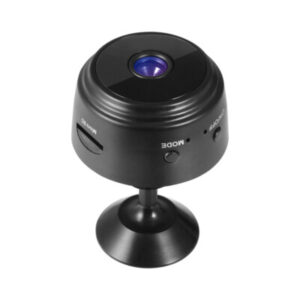More Than Just a Dot on a Map: Unpacking the Layers of GPS Bus Tracking Systems
Delve deeper into GPS bus tracking! Explore the intricate components, advanced features, and surprising capabilities that power modern fleet management....

Delve deeper into GPS bus tracking! Explore the intricate components, advanced features, and surprising capabilities that power modern fleet management.
While the basic concept of GPS bus tracking – seeing a bus icon move on a map – is easily grasped, the underlying systems are far more intricate and capable. Modern GPS bus tracking solutions are sophisticated platforms that offer a wealth of advanced features and functionalities, providing a comprehensive toolkit for effective fleet management. This blog post aims to unpack the layers of these systems, exploring their key components, delving into their advanced capabilities, and revealing the surprising ways they empower transportation operations beyond simple location monitoring.
Deconstructing the GPS Bus Tracking Ecosystem:
A comprehensive GPS bus tracking system comprises several interconnected elements working in concert:
- GPS Receivers: Highly accurate devices installed on each bus that capture precise location data from the Global Positioning System satellites.
- Onboard Diagnostics (OBD-II) Integration: Connecting to the vehicle’s OBD-II port allows the system to collect data on engine performance, fuel consumption, mileage, and potential maintenance issues.
- Driver Identification and Behavior Monitoring: Systems can integrate with driver ID tags or key fobs to track driver assignments and monitor driving behavior, such as speeding, harsh braking, and excessive idling.
- Geofencing and Route Deviation Alerts: Administrators can define virtual boundaries (geofences) and pre-defined routes. The system can then trigger alerts if a bus enters or exits a geofenced area or deviates from its assigned route.
- Panic Buttons and Emergency Communication: Many systems include panic buttons that drivers can activate in emergency situations, instantly alerting dispatchers to their location and need for assistance. Two-way communication features may also be integrated.
- Reporting and Analytics Engine: A robust reporting and analytics module allows users to generate detailed reports on various metrics, including mileage, fuel efficiency, on-time performance, driver behavior, and more. This data is crucial for identifying trends and making informed decisions.
- Integration with Other Systems: Modern GPS bus tracking systems often offer APIs (Application Programming Interfaces) that allow seamless integration with other software, such as scheduling systems, passenger information displays, and enterprise resource planning (ERP) platforms.
Unveiling Advanced Features and Capabilities:
Beyond basic location tracking, modern GPS bus tracking systems offer a suite of advanced features:
- Real-Time Passenger Load Monitoring: Some systems utilize sensors or passenger counting technology to provide real-time data on bus occupancy levels, allowing for better resource allocation and passenger information.
- Predictive Maintenance Alerts: By analyzing vehicle diagnostics data, the system can identify potential maintenance issues before they lead to breakdowns, enabling proactive maintenance and reducing downtime.
- Automated Reporting and Compliance: The system can automatically generate reports required for regulatory compliance, saving administrative time and ensuring adherence to industry standards.
- Driver Performance Scoring: Based on driving behavior data, the system can generate driver performance scores, providing insights for targeted training and promoting safer driving habits.
- Fuel Management Tools: Detailed fuel consumption reports and analysis tools help fleet managers identify areas for fuel efficiency improvements and detect potential fuel theft.
- Customizable Alerts and Notifications: Users can set up custom alerts for a wide range of events, such as late departures, early arrivals, speeding violations, and maintenance reminders.
- Historical Data Analysis: The system stores historical data, allowing for in-depth analysis of past performance, identification of trends, and informed planning for the future.
The Surprising Breadth of Impact:
The sophisticated capabilities of modern GPS bus tracking systems extend their impact far beyond simply knowing where a bus is:
- Improved Emergency Response: Real-time location data and emergency communication features significantly enhance the speed and effectiveness of emergency response in case of accidents or breakdowns.
- Enhanced Accountability: Detailed tracking and reporting features increase accountability for both drivers and fleet managers.
- Sustainable Operations: By optimizing routes, reducing idling, and promoting fuel-efficient driving, GPS tracking contributes to more sustainable transportation operations.
- Data-Driven Innovation: The wealth of data collected provides valuable insights that can drive innovation in route planning, service design, and overall transportation strategy.
Conclusion:
Modern GPS bus tracking systems are far more than just a dot on a map. They are intricate ecosystems of hardware, software, and advanced features that provide a comprehensive platform for effective fleet management. By unpacking these layers and understanding their full capabilities, transportation operators can leverage these powerful tools to optimize efficiency, enhance safety, improve passenger satisfaction, and ultimately drive their operations towards greater success.






